Towing a front-wheel-drive car can be a convenient way to transfer your car from one place to another without having to drive it. But can you flat tow a front-wheel-drive car without causing any mechanical damage? Let's take a look to see if this is possible.
Front-wheel-drive cars with a manual transmission can be flat towed without causing any mechanical damage. However, front-wheel-drive cars with an automatic transmission typically can't be flat towed. If you are unsure, double-check your car's owner's manual to see if flat towing is possible.
Before towing any vehicle, it's vital to know the procedure and have the proper equipment. In this article, we will discuss why some front-wheel-drive cars can be flat towed and why some can't. In addition, we will answer other frequently asked questions about towing cars, so read on!
Is It Okay To Flat Tow A Front-Wheel-Drive Car?
Before we begin, let's discuss what flat towing is. Flat towing is the process of towing a vehicle behind another vehicle, typically using a tow bar.
The tow bar attaches to the front of the vehicle being towed and rests on the ground while being towed. This type of towing is also sometimes called "four-down towing" because all four wheels of the vehicle being towed are on the ground.
While this is possible with some drivetrains, it's not recommended with others. For example, some front-wheel-drive cars can be flat towed, while others can't.
Front-wheel-drive cars that can be flat towed typically have a manual transmission. However, you will need to put the car into neutral before beginning to tow. In some front-wheel drives with manual transmissions, you will also need to disconnect the driveshaft before towing.
This is why it's imperative that you consult your car's owner's manual before flat towing any vehicle.
As we mentioned, front-wheel-drive cars with an automatic transmission typically can't be flat towed. This is because the transmission fluid needs to circulate while the vehicle is in motion.
When a front-wheel-drive car with an automatic transmission is flat towed, the transmission fluid doesn't circulate, and this can cause damage to the transmission.
Nonetheless, some front-wheel-drive cars with automatic transmissions can be flat towed. You will need to check with the dealer and consult your car's owner's manual to see if this is possible.
Before towing any car, ensure you have the proper equipment. This includes a tow bar, safety chains, and a way to secure the tow bar to the vehicle being towed.
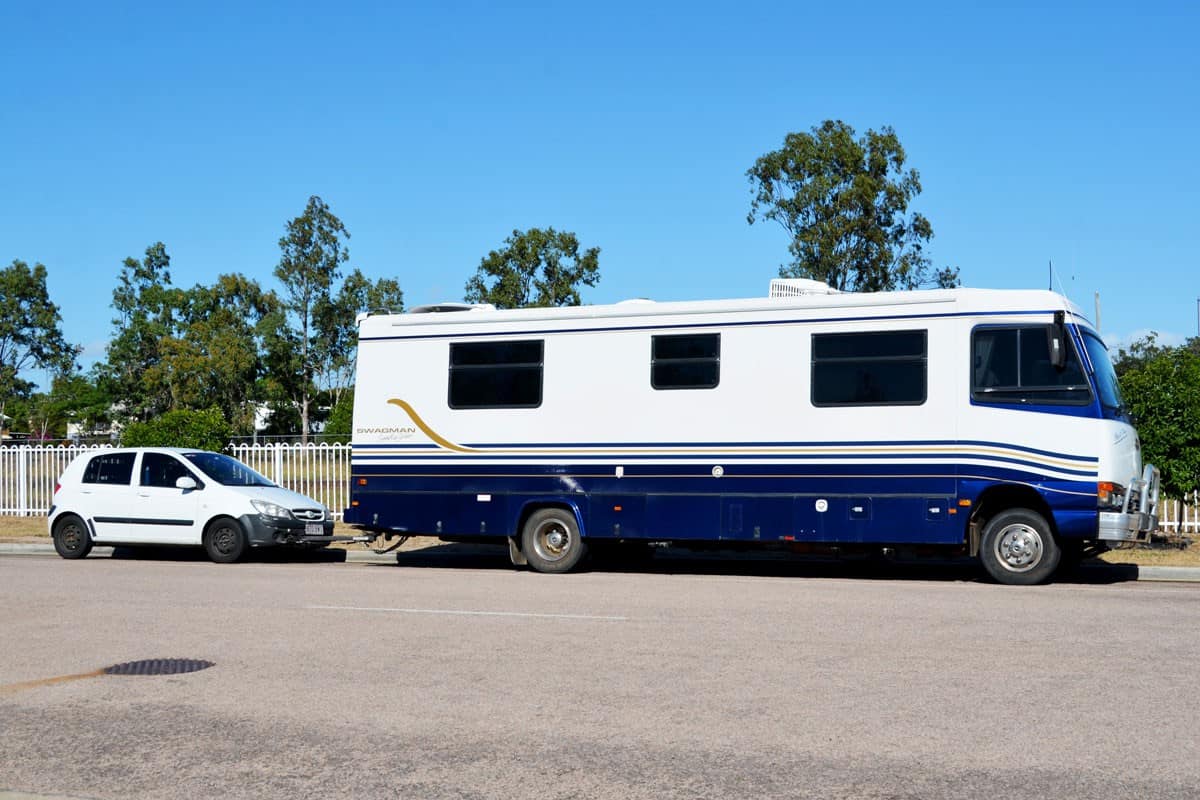
What Are Other Ways You Can Tow A Front-Wheel-Drive Car?
If flat towing isn't an option for your front-wheel-drive car, there are other ways you can tow it. Let's take a look below:
Dolly
The most common way to tow a front-wheel-drive car is with a dolly. A dolly is a two-wheeled trailer that attaches to the front or back of the vehicle being towed. The wheels of the vehicle being towed roll on the dolly while being towed.
Trailer
Another way to tow a front-wheel-drive car is with a trailer. You will need to load the entire car onto the trailer for this to work. A trailer is a great option if you need to tow a disabled car or one that can't be flat towed.
Axle-Lock
Another option for towing a front-wheel-drive car is with an axle lock. An axle lock will keep you from having to disconnect your front axle when towing.
This is a good option if you don't have another choice. It will also prevent permanent damage to your car's transmission.
Lube Pump
Lastly, a lube pump will keep the transmission fluid circulating while your car is being towed. This is a good option if you can't flat tow or dolly tow your car.
A lube pump will keep your transmission cool and prevent damage. It's a good idea to invest in one if you plan on towing your front-wheel-drive car often.
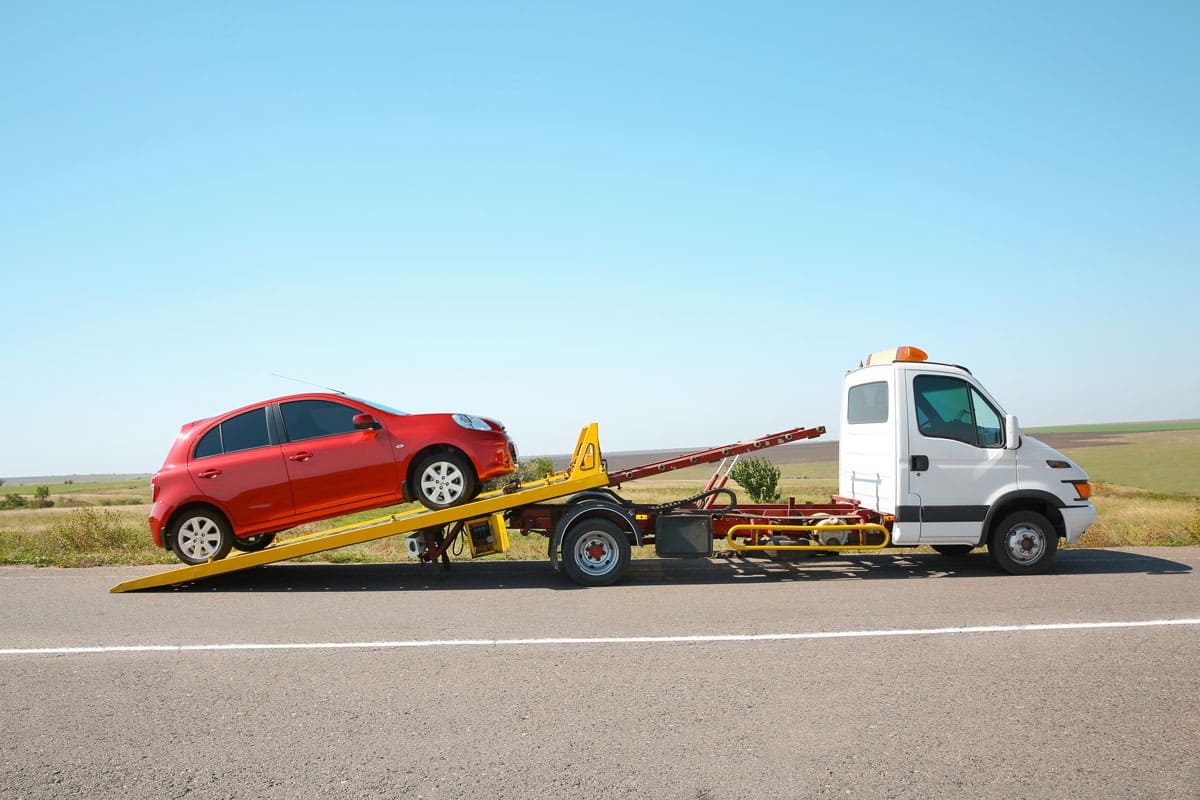
Can You Flat Tow An All-Wheel-Drive Car?
In general, you can't flat tow an all-wheel-drive car. This is because most all-wheel-drive systems need to be disengaged before being towed.
If you flat tow an all-wheel-drive car without disengaging the system, you could cause damage to the transmission, axles, or other components.
In addition, you typically can't use a dolly for towing an all-wheel-drive car. If you do, then you will need to disconnect the driveshaft.
If you own an all-wheel-drive vehicle and it breaks down, be sure to tell the tow truck driver that it's all-wheel drive. This way, they can tow the vehicle properly without causing any damage.
Can You Flat Tow A Rear-Wheel-Drive Car?
Yes, you can flat tow a rear-wheel-drive car. This is because the rear wheels are the ones that are powered by the engine, so there's no risk of damaging the transmission.
You will still need to put the vehicle in neutral and ensure the emergency brake is disengaged before towing.
Some rear-wheel-drive cars may require you to unlock the differential before flat towing. This helps prevent any damage to the gears.
This also includes 4-wheel-drive vehicles. Due to 4-wheel-drive vehicles being rear-wheel drive when in 2-wheel drive mode, they can typically be flat towed.
However, as with all vehicles, be sure to check your car's owner's manual before flat towing to see if there are any special instructions.
Can You Flat Tow A Damaged Car?
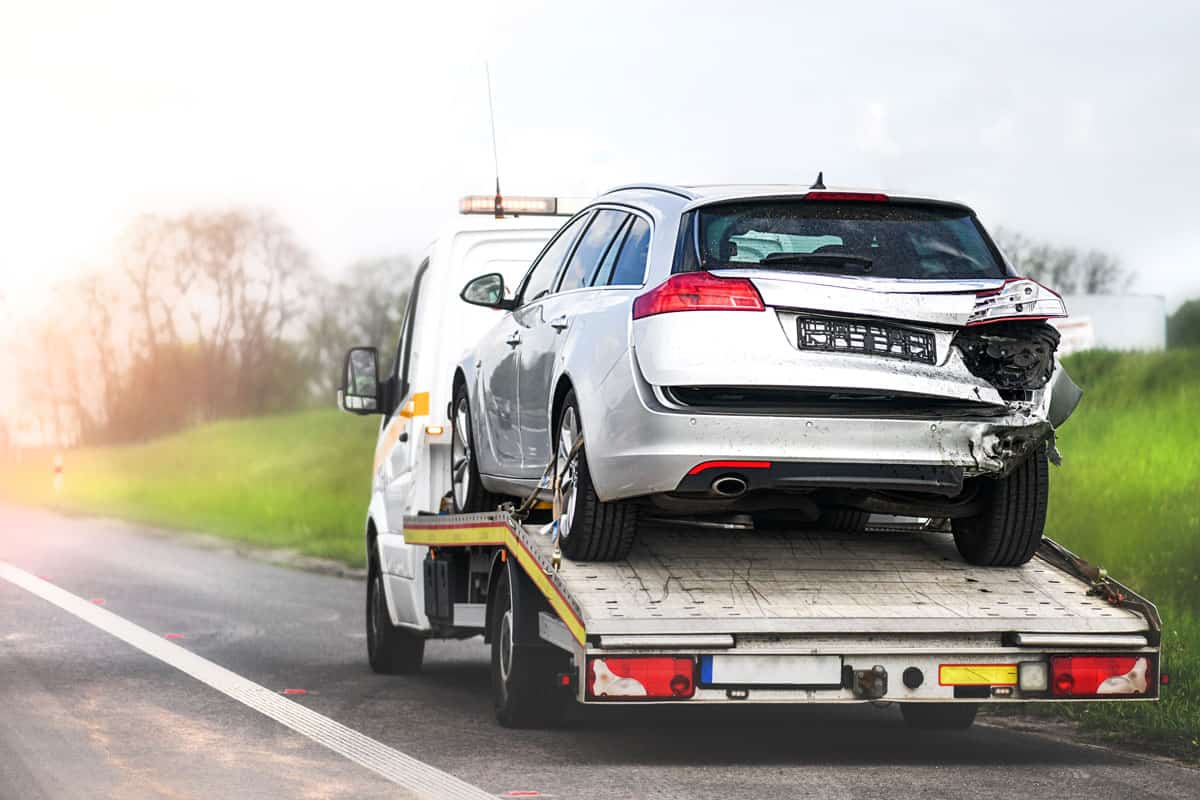
If you get in a car accident or your car breaks down, you may be tempted to flat tow the damaged car to a repair shop. However, this is not a good idea.
The reason being is that flat towing can cause additional damage to a damaged car. For example, if the car has frame damage, flat towing could make the damage worse.
In addition, you could put yourself and others at risk if you flat tow a damaged car. For example, if there is front end damage, the tow bar could come loose and hit another vehicle.
If your car is damaged, it's best to have it towed on a flatbed truck. This way, the car can be securely loaded onto the truck without causing any additional damage.
Is Flat Towing Bad For Your Car?
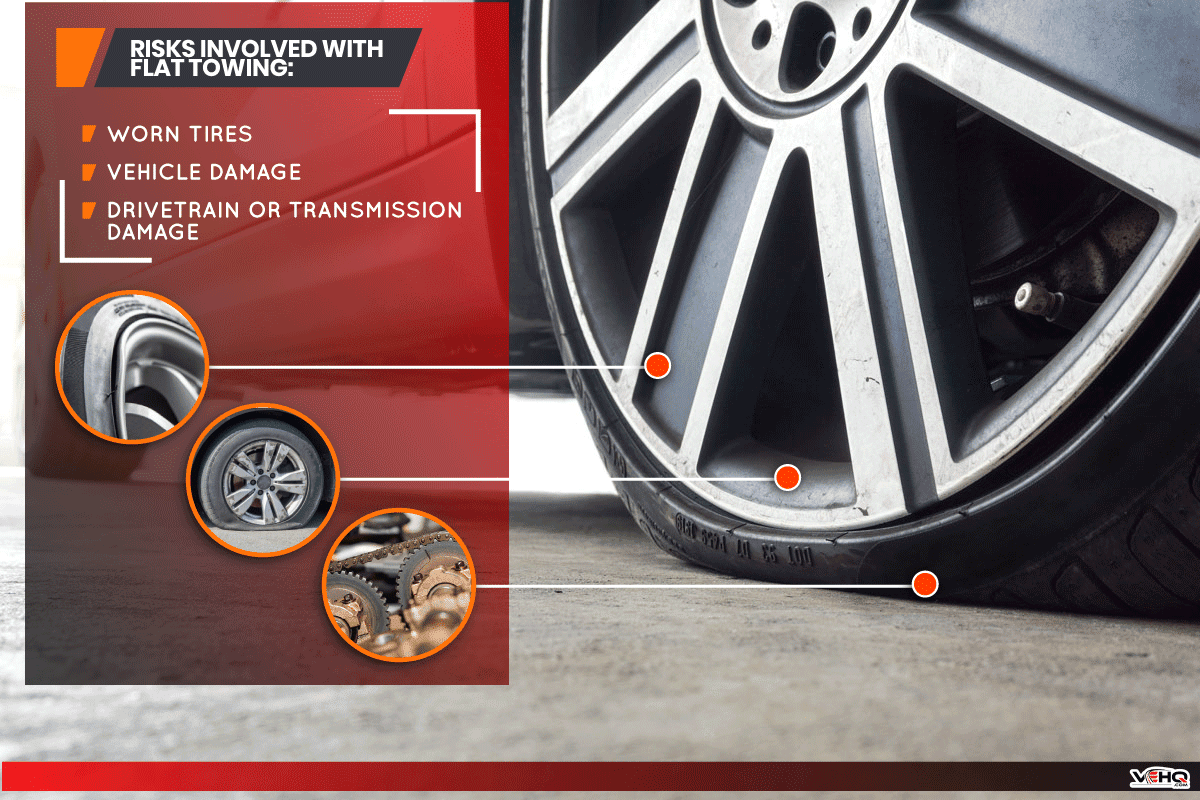
While it is convenient and requires less equipment, flat towing isn't the best option for every situation. Let's take a look at the risks involved with flat towing.
Worn Tires
Since all four tires are in contact with the pavement while flat towing, they will wear out faster than if the car were being towed on a trailer.
This is especially true if you are flat towing for long distances. The additional wear and tear on the tires can shorten their lifespan and may require you to replace them sooner than you would otherwise.
Vehicle Damage
Another risk in flat towing is your vehicle coming into contact with debris or potholes. This can cause damage to the vehicle being towed as well as the one doing the towing.
Not only could it damage your car, but it could also put you and other drivers at risk if you lose control of the vehicle being towed.
Drivetrain Or Transmission Damage
Even if you are properly flat towing your vehicle, there is still a risk of damaging the drivetrain or transmission.
As mentioned earlier, your car's tires are in contact with the pavement while flat towing. This can cause the tires to spin, which puts stress on the drivetrain.
This can also put strain on the transmission over time. Keep these risks in mind when deciding whether or not to flat tow your car.
Does Flat Towing Put Miles On A Car?
There are a few factors that will affect how many miles are put on your car while flat towing. First is the age of the vehicle and the type of odometer it has.
Most cars now have an electronic odometer that is connected to the car's computer. This means the odometer won't register any miles unless the vehicle is on and running.
However, an older car with a mechanical odometer could add miles to the odometer even when the car is turned off. This is because manual odometers count wheel rotations, not engine use.
So, if you have a newer vehicle, you shouldn't need to worry about the flat towing adding any extra miles to the odometer.
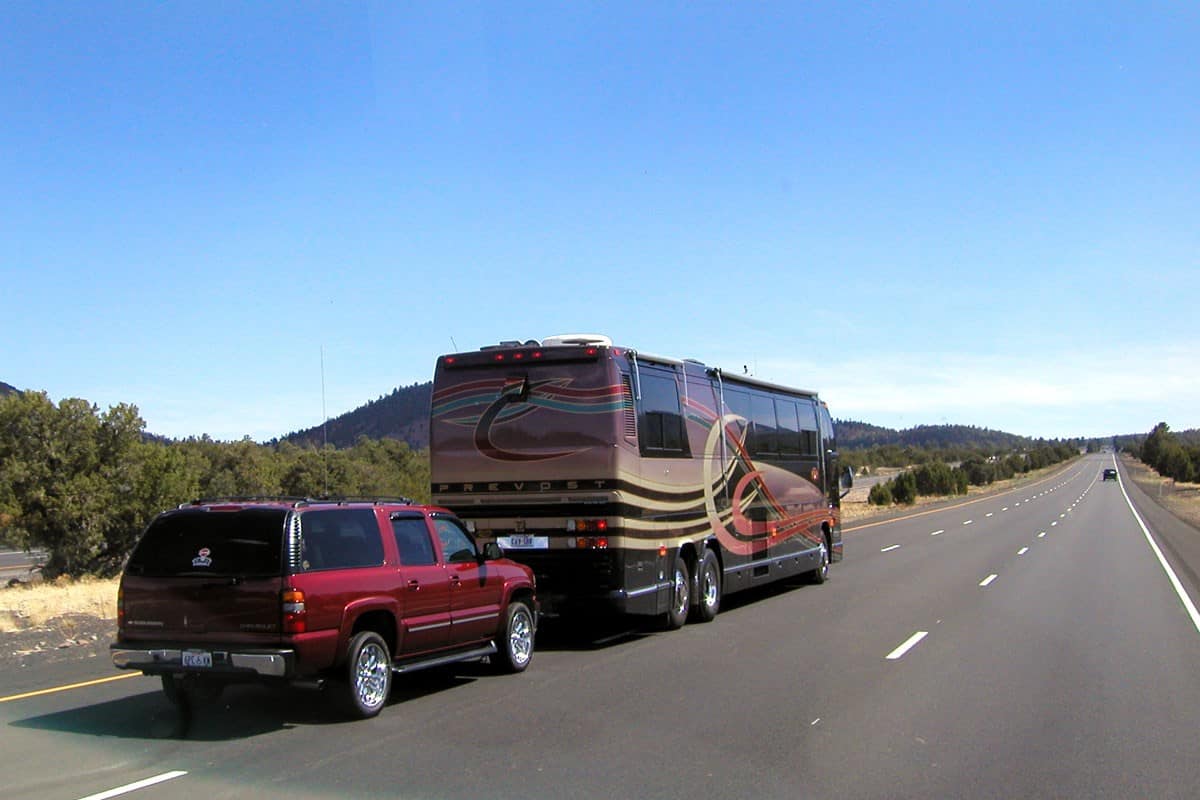
Do You Need To Register A Car Before Flat Towing?
Depending on the state you reside in, you may need to register your car before flat towing it. If your state requires you to register your car, you will need to do so before towing it.
In addition, the car needs to have lights and other safety equipment that is required by law. This includes items like brake lights, turn signals, and reflectors.
You will also need to make sure the car being towed is insured. Most states require that all vehicles on the road be insured.
If you are unsure of the laws in your state, you can contact your local DMV or the police department.
Final Thoughts
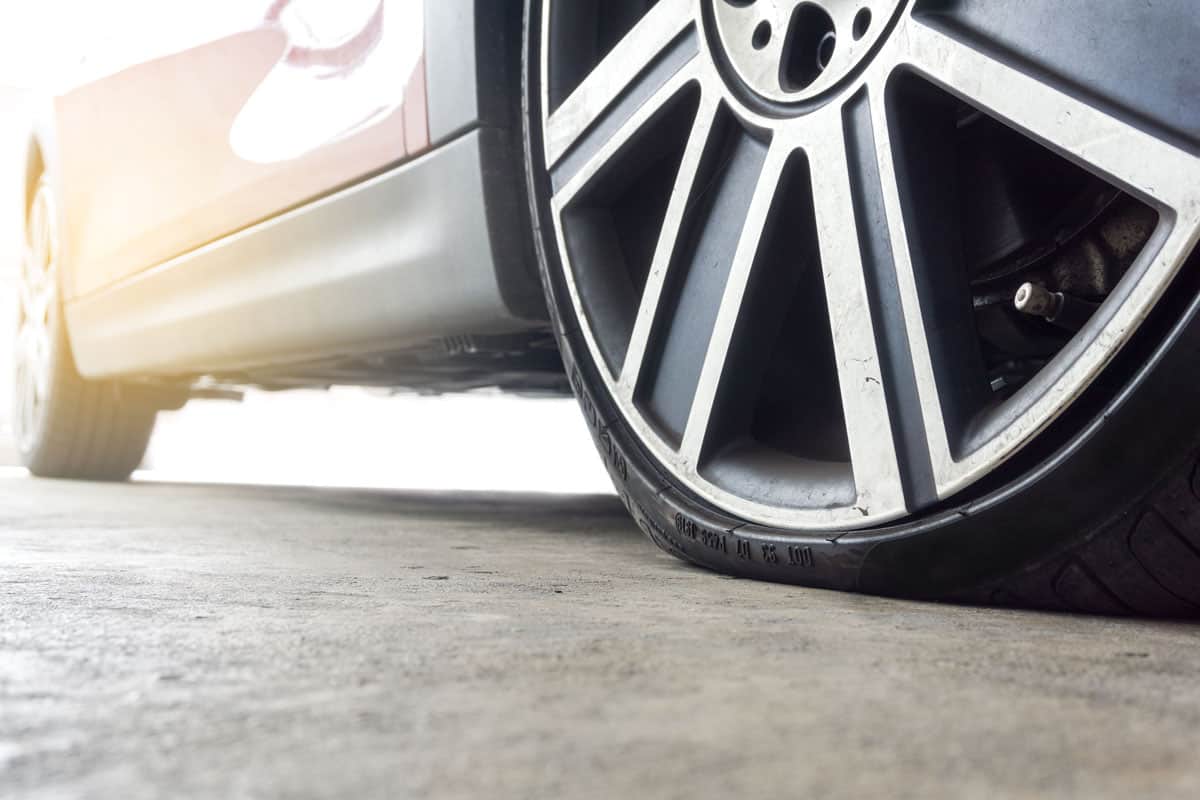
Overall, it's important to understand your car's towing capacity and the risks involved with flat towing before you decide to do it.
While flat towing is a convenient way to tow your car, if done incorrectly, it can damage your car or put you and others at risk.
Made it to the end? Here are other articles you might enjoy:
Can You Flat Tow A Nissan Leaf?
